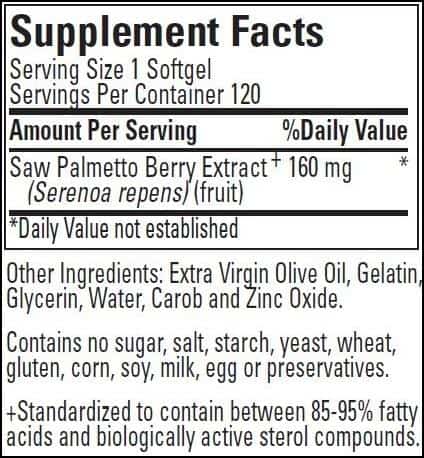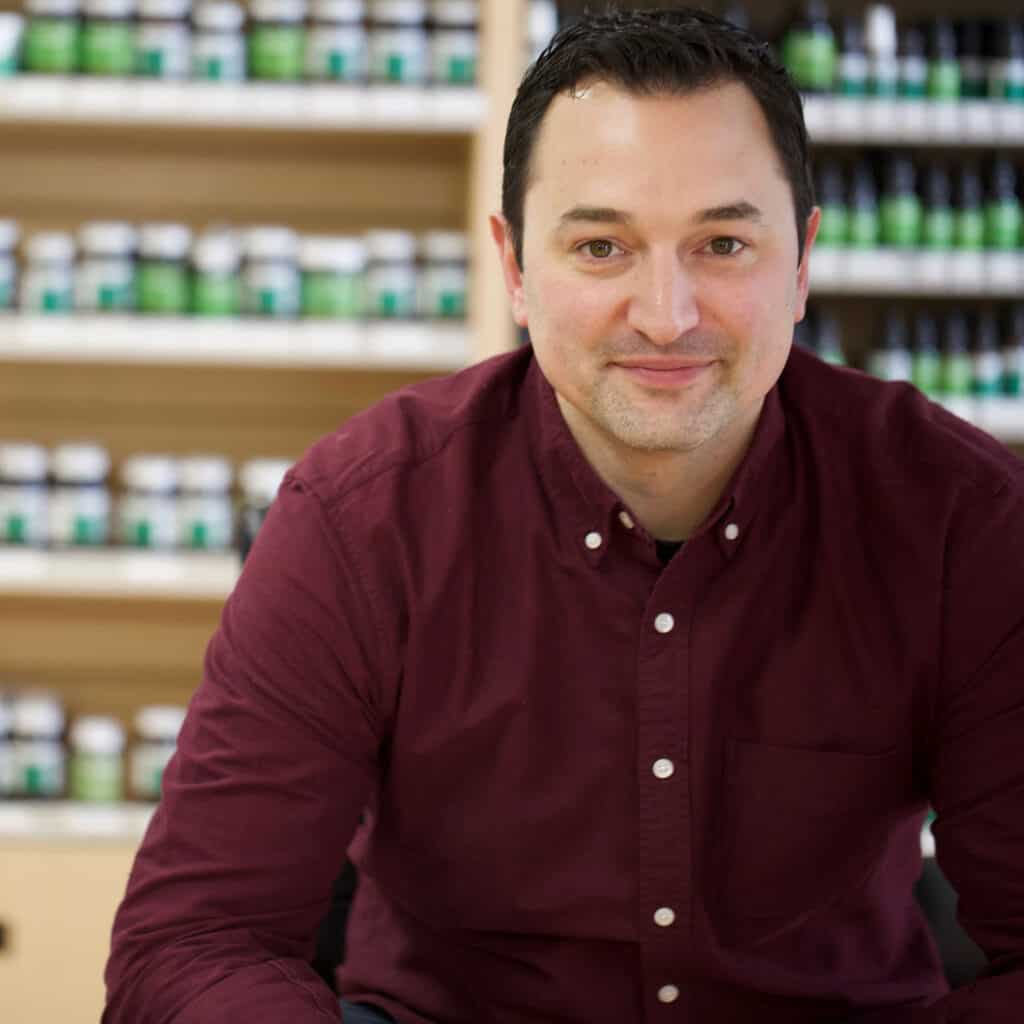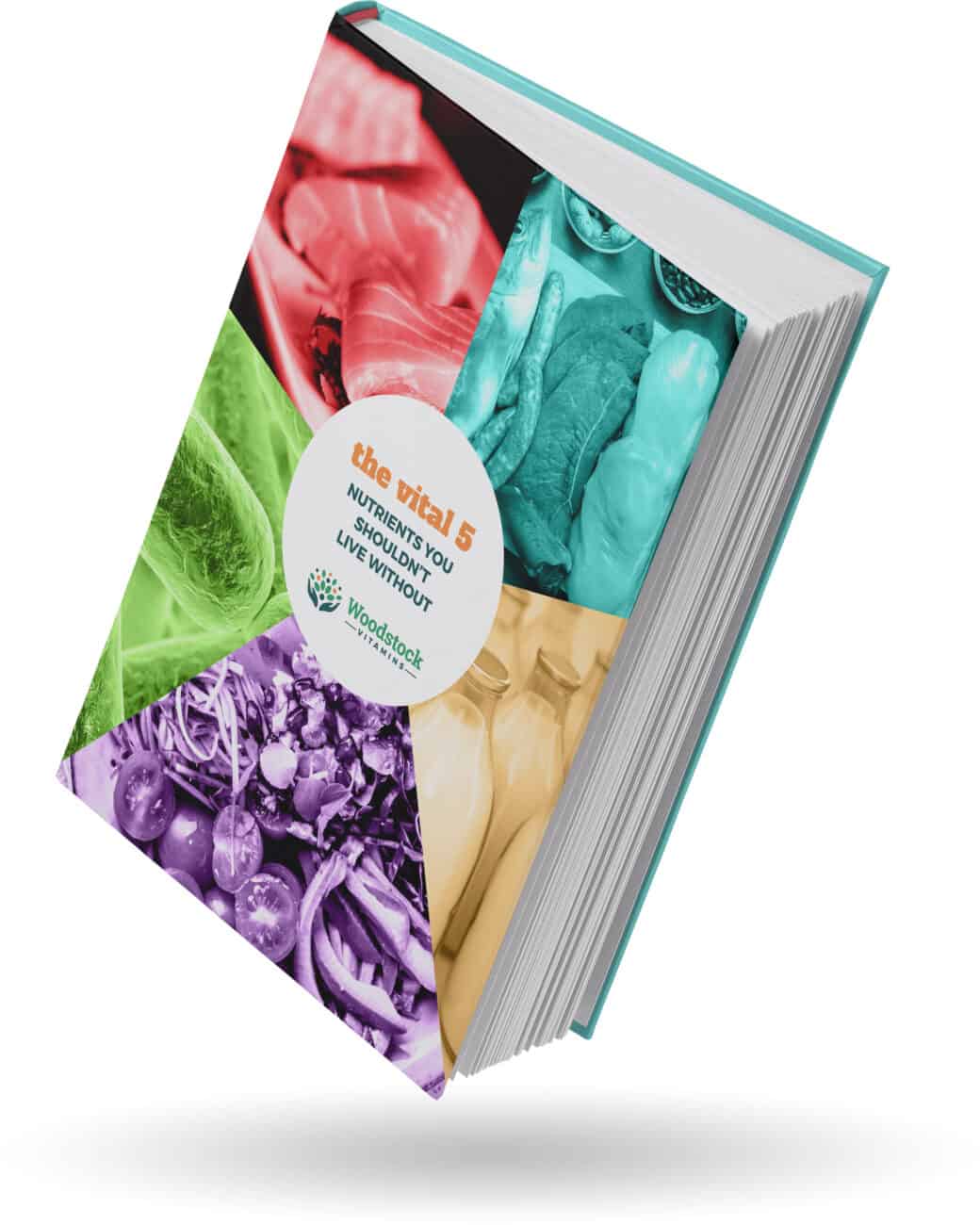This article is part of a series that discuss, in depth, quality-related issues around a specific ingredient.
Saw palmetto (Serenoa repens) is a berry grown predominantly in the southeastern United States, mostly in Florida. No, saw palmetto isn’t what makes a Florida man meme-worthy – that’s usually bath salts.
The extracts of saw palmetto have solid clinical evidence linking their use to improving symptoms of enlarged prostate or BPH. Back almost 20 years ago now when I was a pup in pharmacy school, we were taught that saw palmetto does have a role in the early stages of BPH, but the disease typically progresses past the abilities of the herb.
If the choice to use saw palmetto is made, I give two warnings about the use. First, women don’t have prostates, and if you grow one, call 911.
That’s not my first warning.
First, we must loop our doctor into the conversation anytime we use a supplement. You can effectively mask something serious with some well made over-the-counter options, like what we discussed in Reflux Redux.
Heed that warning; I share a situation on our “Medical Horror Stories” podcast episode where a patient did NOT do this, and what the sad outcome was.
Second, be careful of what you buy. You’re most likely not getting real saw palmetto.
We have an herb that actually works on our hands, and as a result, saw palmetto is in the top 20 of all supplements sold, with over $35 million in sales for 2018 on the herb itself, and over $150 million in 2016 for all saw palmetto-containing products.
Being a supplement celebrity is a blessing and a curse. More products and more suppliers means shady characters can infiltrate the space. Global shortages of saw palmetto have happened as recently as 2017 due to hurricanes and the Chinese hoax of climate change. There were also some regulatory changes in Florida around saw palmetto.
The demand doesn’t go away even if there’s a pinch in the supply chain, and the option is to jack up prices or use adulterated raw materials to keep the profit the same. Too many brands go for Door #2.
Before we get into the problems, let’s best understand what is so special about saw palmetto.
The Active Components of Saw Palmetto
When we think of berries, we probably think of juice – water, vitamins, and yes, sugar. What’s most interesting about saw palmetto is that we’re harvesting it for its oils and fats.
The fatty acid content of saw palmetto matters. The United States Pharmacopeia says saw palmetto should contain a minimum of 80% total fatty acids. Here’s a non-sciencey-nerdy list of what we want to see in saw palmetto supplements:
Active Constituents In Saw Palmetto
- Fatty acids
- Fatty alcohols
- Phytosterols
Here’s a cool chart that DOES do the nerdy work, listing specifics and relative amounts of fatty acids:

It’s one thing to contain the fatty acids, it’s another to have the right amounts of the right fatty acids. It’s an important distinction, because saw palmetto has a unique “fingerprint” – a mix of the different ingredients in relation to each other.
Saw Palmetto Contamination
As we discussed in the 3 Types of Dietary Supplements, when we buy a supplement, we’re not always getting what we want, but instead are often getting something dangerous or ineffective.
I have a number of concerns around any botanical supplement, but the lowest hanging fruit is the method of extraction. To get the good stuff out of the plant, we need to squeeze the juice (no, not wheeze, Paul Shore).
There are two major methods that can successfully yield effective saw palmetto extracts: supercritical CO2 and hexane.
We don’t like hexane because it’s nasty. It’s a harsh solvent that is carcinogenic, and we don’t want ANY traces of that ingested if we can help it. We certainly don’t want a small exposure to it every day as long as we have a prostate. Here’s a good rule of thumb: avoid any supplement extracted with hexane.
We’ve screwed up the earth, and as a result we have a higher-than-naturally occuring amount of heavy metals making their way into the food supply. Plants are sprayed with pesticides and herbicides. All of these fun things can make it into any of our herbal supplements, so we should be aware of that and use brands that are extensively testing to ensure exposure is minimal, if at all.
Saw Palmetto Adulteration
Beyond that, there are numerous ways your saw palmetto product could fail you. Here are all the things used in saw palmetto manufacturing to get around that pesky idea that it costs more to use real, quality saw palmetto:
Unripe Berries
This should be common sense, so I won’t spend a lot of time here. If you use unripe saw palmetto berries, you will have dramatically less bioactive compounds.

Using unripe berries isn’t technically adulteration, but it is lower potency and mislabelled. You could have as low as 10% of the claimed amount of fatty acids and active compounds.
Cousin Berries
A common trick in the botanical world of supplements is to do the smoke screen. They’ll mix in a bunch of saw palmetto berry-looking berries into the batch. We’re not going to inspect each one individually, and they know it.

Some more brazen suppliers will use berries from cousin plants. The end result of both is that these end products will not have the same profile of active constituents and you won’t be really getting saw palmetto.
Over-Processed Leftovers
How many days will you keep reheating that meatloaf from the other night? Hopefully not more than once.
In the supplement industry, nothing goes to waste, including the waste. Any component of manufacturing that accumulates could be sold to other industries or manufacturers for use.
In the case of saw palmetto, some product was found to be made using the used-and-abused components from other berry-like ingredients. That makes you feel warm and fuzzy, right?
Lower Cost Oils
Why bother using berries when we can just use cheap vegetable oil, right? Since saw palmetto is in the palm family, palm oil extracted from cousin plant parts was found to be a good substitute if you didn’t care about integrity or following what little laws are in place.

Now, any cheap vegetable oil is used. Canola, peanut, olive, sunflower, or even coconut oil have been found in the saw palmetto supply chain.
Franken-Herbs
Some suppliers will purchase the individual, isolated fatty acids from chemical suppliers and reconstruct a profile that looks similar to saw palmetto. You’re getting the fats, but you’re not getting saw palmetto.
Saw Palmetto? More Like Saw Pal-NOT-o!
Your supplement may be labelled with saw palmetto extract, but in reality you’re getting spray dried berry powder. This high-heat processing degrades the goodies, knocking the strength down to 1/3 of the labelled amount.
The Newest Saw Palmetto Adulterant – Animal Fat
The thing about those tricks before is that they’re easy to flesh out. Well, if you’re doing your job.
Manufacturers have a duty to verify and validate that their raw materials are what they say they are before they make any products. Many are not savvy enough, and some are intentionally sleeping on the job. Both are looking to reduce their costs and maximize their profits over doing the right thing.
Because those other methods don’t have the right amounts of the right fatty acids, their “fingerprint” doesn’t match quality saw palmetto. Don’t worry, the wicked never rest.
In November 2018, the American Botanical Council issued a warning about a new type of adulteration. They would take animal fat and mix it with dilute or weak saw palmetto. The origin of these extracts were typically Asia, which I believe is NOT Florida.
We really don’t know what kind of animal they’re using, but there are thoughts that it could be pigs, chickens, or lambs.
These animal fats will produce a similar fatty acid profile to saw palmetto and this adulteration is MUCH more difficult to detect.
More importantly, this really stinks if you’re vegan. What if you’re religious and consuming animal products is against your religion?
Testing For Animal Content In Saw Palmetto
The American Botanical Council, in partnership with other supplement quality bada$$es, have released a Laboratory Guidance Document to help manufacturers navigate all the potential adulteration pathways.
It doesn’t mean your brand is actually doing that.
Mark Blumenthal, founder and executive director of the American Botanical Council, says aptly:
“There appears to be no depth to how low some fraudsters in the global botanical extract market are willing to go to make an illicit profit…
…fraudsters have begun to add fatty acids produced from animal fats to so-called ‘saw palmetto’ extracts. This is not only unfair to consumers but also to the reputable companies that produce and market authentic, reliable saw palmetto ingredients and products made from them.”
There are two ways that you can guarantee no adulterated ingredients in the botanical space:
- Use whole herb/berry/etc so you can visually identify you’re getting the right then, and then test it to ensure nothing flew under the radar as highlighted above.
- Extensively test any and evolve with your testing methods as new adulterants are identified.
What’s real, though, is that many raw material suppliers are pulling out all the stops to make fake products, and manufacturers are either looking the other way or not doing proper due diligence. It’s too easy…
Our manufacturers are exceeding expectations on saw palmetto adulteration prevention. Soon, we’ll be partnering with an industry leader in the saw palmetto space. More great stuff from us at Woodstock Vitamins.
It’s Too Easy To Be Greasy
It’s too easy to do the wrong thing, especially in the natural products industry. We do a disservice by not pushing back against false advertising, bait-and-switch, and misinformation.
It’s also too easy to dismiss natural products as ineffective or lacking clinical data. Due to the major loopholes in quality regulations and the lack of aggressive oversight, our market is often flooded with products that are, quite frankly, garbage.
When a supplement is shown to be ineffective in clinical trials, is it because of the ingredients, or because of the poor quality products that are researched? We do a disservice by easily dismissing supplements as placebo or no good based on the data we have.
With saw palmetto, it’s clear the number of ways the product can be adulterated. As a result, consumers are NOT getting the product they seek, and therefore won’t get the benefits that do actually exist.
It’s too easy to ignore the truth, that the supplements we buy are NOT what we think they are. We do a disservice by putting our desire for “natural” options over accountability.
I believe supplements can be an excellent part of a holistic care plan, but we must be aware of the quality gap, educate ourselves on how to best buy a supplement, then seek out those brands that actually deliver these best-in-class supplements.
Just trying to keep it real…

Neal Smoller, PharmD
Owner, Pharmacist, Big Mouth



